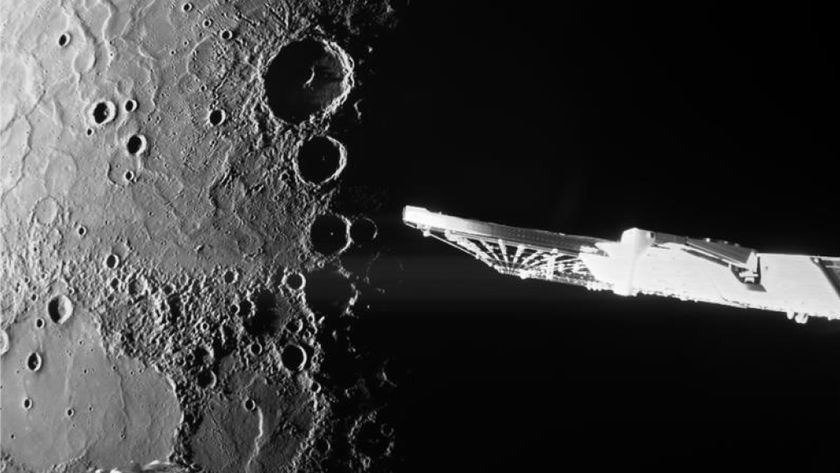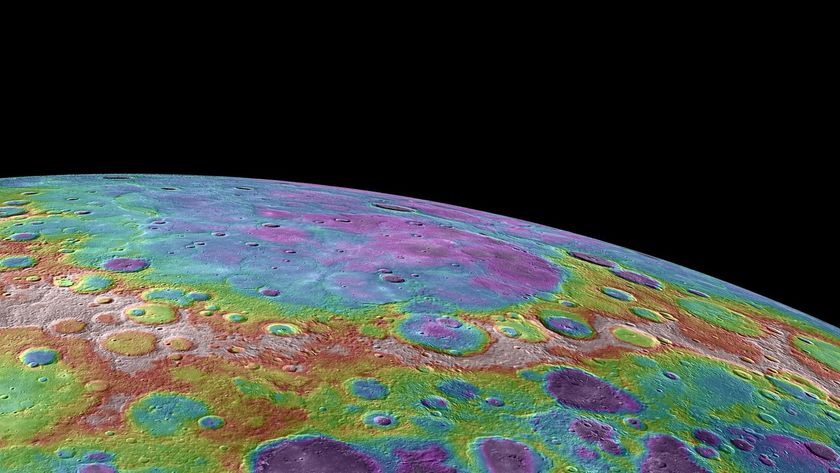Mercury's Mysteries, Old and New
Mercury, named after the mercurial god of trade who moved swiftly from place to place, has always been just out of scientists' reach.
The elusive planet is hard to glimpse from Earth, as it barely rises above the horizon, and it has received far less attention from NASA probes than its flashy cousins, Jupiter, Saturn and Mars.
Many scientists hope enigmatic Mercury will finally reveal its secrets through data sent back by NASA's MESSENGER spacecraft, which flew by the planet Jan. 14, but so far the probe has only exposed new mysteries.
The mission uncovered strange differences between Mercury's craters and the moon's, puzzling facets of its improbable atmosphere and magnetic field, and an unexplained feature called "the spider," the likes of which scientists have never encountered before.
Misunderstood Mercury
Mercury has confused scientists since they first observed it.
When ancient Greek astronomers saw it rising briefly at sunrise and sunset, they thought the planet was two different objects, naming the morning body Apollo and the evening appearance Hermes. It wasn't until the 5th century B.C. that Pythagoras suggested the two were one.
Sign up for the Live Science daily newsletter now
Get the world’s most fascinating discoveries delivered straight to your inbox.
For a long time, scientists believed the same side of Mercury always faced the sun, similar to the way the moon orbits the Earth. 1960s measurements that the "dark" side of the planet was much hotter than expected called this notion into question, and subsequent radar observations of its orbit overthrew the theory.
Mercury's small size (it gained the title of smallest planet in the solar system when Pluto was robbed of that distinction) and unassuming appearance have led scientists to underestimate the planet. It was long assumed to be merely a larger version of Earth's moon, where nothing much was happening.
Uncovering secrets
That idea flew completely out the window when NASA's new spacecraft recently passed by Mercury. The probe revealed a "whole new planet," said Robert Strom, a scientist on the mission team.
The spacecraft sent back 1,200 images and data from seven onboard instruments that show the planet is no moon-wannabe, but a dynamic place with secrets of its own.
This bizarre world is the only other inner solar system planet besides Earth to have a magnetic field. Scientists suspect the magnetosphere might be caused by the equally strange presence of an extremely dense iron core that accounts for two-thirds of Mercury's mass.
The magnetosphere, in turn, seems to play a part in drawing a tenuous atmosphere onto the planet, unusual for a small globe whose gravity is not strong enough to retain an atmosphere on its own. The magnetic field may also be involved in creating the tails of hydrogen and sodium atoms that stream off the planet.
The discovery of an atmosphere was one of the big surprises of the only other Earth-to-Mercury mission, the Mariner 10 probe that flew by the planet in 1974 and 1975. Before that, scientists had assumed that Mercury was a barren, pockmarked world just like the Moon.
Pockmarked it certainly is — its grayish surface bears the scars of millions of years worth of space rocks slamming into it. But these craters seem different than the Moon's, and some bear features unlike anything seen elsewhere in the solar system.
For one thing, craters on Mercury seem to be shallower than similar-sized dents in the moon, although measurements of more craters will be needed to confirm if this is true everywhere on Mercury.
The new photos also revealed a bizarre crater surrounded by radiating cracks in the ground that the scientists have dubbed "the spider." They are unsure of what could have caused such a formation, but suggest volcanism might have been involved.
The spacecraft's recent flyby only whetted astronomers' appetites for more information about this peculiar world.
"It was not the planet we expected," said Sean Solomon, the principle investigator of the mission. "It's changing very rapidly, with features that haven't been seen on any other planet. It's a very dynamic planet with an awful lot going on."
The probe is set to make two more passes by Mercury in October 2008 and September 2009, before settling into orbit in 2011. Scientists are expecting these encounters to provide even more surprising revelations.
"The best is yet to come," mission member Strom said. "What you're seeing here is just the tip of the iceberg. I am very excited."












